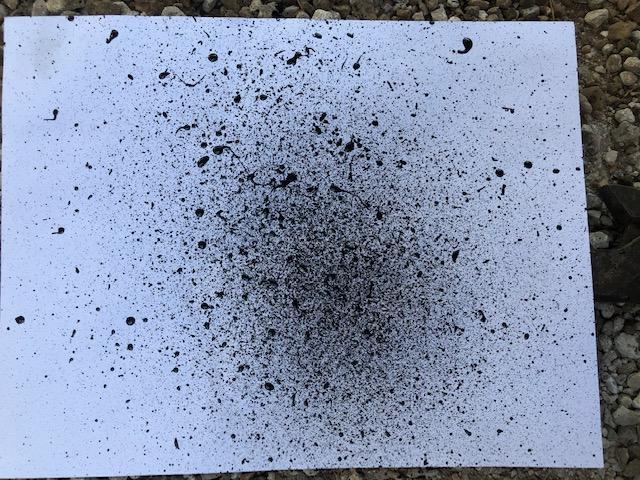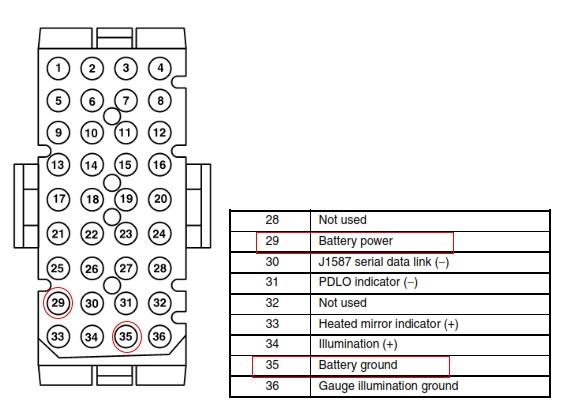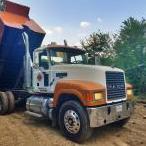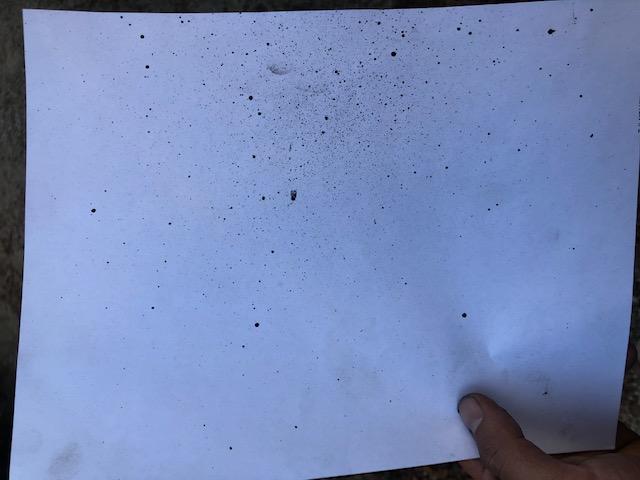-
Posts
104 -
Joined
-
Last visited
Content Type
Profiles
Forums
Gallery
Events
Blogs
BMT Wiki
Collections
Store
Posts posted by ivanuke
-
-
Thanks MT! Just what I was looking for
-
 1
1
-
-
13 minutes ago, JoeH said:
Is fuel thrown in with maintenance? And are you expensing parts for new truck assembly under that 1/3 maintenance or are you appreciating the parts into the value of the trucks?
The Fuel and parts are in the maintenance. Majority of the cost of maintenance besides fuel is tires. If we paid independent mechanics for each time our trucks needed something we would make no money! Were getting ready to hire a full time mechanic so we can average that cost into the maintenance of all five trucks. Being frugal with parts goes a long way, in the past 3 years i have averaged 1,500 in parts per year per truck excluding tires. Trucks are 12-18 years old so im always replacing something but its usually not expensive.
-
I've been able to find documentation from mack for Engine maintenance intervals which are very detailed, but specifically call out the MP Series engines, is it safe to apply these same intervals for the Aset AC and AMI Motors? I've found documentation as far back as 2006 and it still calls out MP series engines only. I thought MP was introduced around 2007. I don't suspect any major variations but just need to confirm with the more experienced guys on here or if someone could point me in the right direction for the Aset interval maintenance documentation.
-
On 12/12/2019 at 6:21 AM, JoeH said:
My costs are a little different from typical trucking as we run a concrete delivery business. I'm not just operating trucks, I'm buying materials & manufacturing concrete. Currently it's just my dad and I that drive, and we fix our own trucks, but sometime soon I need to hire a driver and grow the business a little. I'm trying to come up with metrics to gauge what is reasonable to target for revenue/profit per employee.
This sounds very similar to our company. Its my dad and I handling the maintenance, I handle all the business side of things as well as improve our maintenance processes, as well as do all the troubleshooting for our trucks. We have 5, currently 3 working and 2 being converted to dumps. We mainly haul dirt locally, After 3 years of trending the numbers and maintenance I can safely say the 1/3 driver 1/3 truck(maintenance and insurance) 1/3 profit is about right. Were located in Houston Tx so YMMV. The going rate is 35% around here for drivers. I plan to keep it there, and improve my process in the back end to increase profits.
-
 1
1
-
-
Youll need to get a scanner to read the fault codes. If it comes on check your coolant tank to see if its not low that could be an issue.
-
Do you have a part number for this turbo?
-
Only have purchased the road choice coolant. Doesn't look like I'll be buying anything else. If it's a non critical part I would consider cheaper alternatives. But something like clutches and alternators stick with the tried and true.
-
3 hours ago, Mack Technician said:
You buy the Granites you were looking at?
I decide to skip on them because there's more lower mileage ones coming soon. They sold for 5000 and 6000 flat price I should of got one regardless!
-
 1
1
-
-
2 hours ago, Mack Technician said:
Time for a compressor.
The compressor on my truck is a meritor system saver 318, i cant seem to find any for sale. Any compressor brand should do as long as it fits and same CFM? Im thinking one from bendix as those seem easier to find. I'll have to take a closer look tomorrow.
-
I just got around to trying to fix this issue, I did what you recommended and this is the amount of oil it put on the paper in 1 minutes time. Any advice on where to check next? I'm not sure how to verifdy if oil is being pulled past the rings of the compressor.
Paper was about 24" away from supply line for 1 minute.

Update: I ran the truck for 30min and then did another 1 minute paper test. This is the results. Im assuming the first test was maybe risidual, dont know if itll clean up after a while. Thoughts?
-
6 hours ago, Mack Technician said:
Nasty, if you don’t have your anti-capillary jumper in the coolant sensor circuit you certainly need to get that updated once you have this fixed. Just last week I found another truck without the harness. I popped the plug and it was full of coolant. In that case we caught it before it made the ECM trip.
Do you have a part number for this jumper? Or how it prevents capillary action? I need to make sure mine have it too.
Edit: Nevermind just did a quick search for anti capillary jumper and found it
 Pai 854049 Mack 20838672
Pai 854049 Mack 20838672
-
 1
1
-
-
came for the pics stayed for the tits
-
 1
1
-
 1
1
-
-
It looks like Pins 10, 22, and 24 are the culprits. Pins 10 and 22 are 12v+ and 24 is ground. If everything else works fine in the truck, like your headlights and windshield wiper, I think the ECU is what caused the problem, an internal failure Im thinking. If you're looking at the harness connector, pin 1 is upper right hand side, count down. Top half has 4 rows bottom half has 3 rows.
Are there any other fuses that are blown? If so please list them here. Also are you saying if you connect it back you can turn on the truck by replacing the fuse, but itll blow shortly after? Not an immediate blow?
-
I was just about to message you, I spent some time looking through the schematics. If you disconnect the J2 line and the fuse keeps blowing you have a short in the harness. If it doesn't blow and it blows when you have J2 connected, your ECU is probably bad, but now it looks like you have pretty good damage on both sides. If you determine your ECU is bad I'll offer to buy from you, I want to take a stab at repairing one. If i were you, I would clean that connector as good as I could, and make sure there is no visible shorts (use your multimeter on ohm setting to make sure theres no short from pin to pin) and if it looks good, put another fuse back in and see if it pops (which it shouldnt if all pins were good during the ohm check) This would help determine if it was the harness or the ECU, the connector looks pretty destroyed, hopefully its salvagable. Not sure if mack sells connector parts.
-
Sorry to hear that, if you have Code 6-4 thats loss of communication to an ECU. Attached are the troubleshooting steps from the V-Mac III manual for this code, go through these tests and it may help you find the fault, there is a paragraph in there if you lose both communication lines the engine wont start. Let us know what you find!
-
I just picked up an 06 CV713 with an eaton autoshift, I got it from a salvage yard but its definitely fixable. I will start to tear into it and to the electronics and see just how much would be involved to make the swap. I may ditch the autoshift myself if its not to my liking.
-
 1
1
-
 1
1
-
-
Try removing the dash and see if you can get your meter leads to touch Pins 29 for power and pin 35 for ground (cant remember if the wires had boots or if the crimp is exposed enough to get leads on it. or maybe get sharp leads to poke the wire). If you have 14 volts I would get another dash. Pins 29 and 35 are somewhat close together, just be careful they don't touch when checking voltage.

-
 2
2
-
-
You can perform a Blink Code Method for reading the diagnostic fault code. The lightning bolt flashses a two digit blink code for each fault in the system. Its a quick and easy way to get the blink code, here are the steps:
1. Turn the key to the ON position and wait a few seconds.
2. Make sure your speed control switch is in the OFF position.
3. Press the SET/DECEL switch for a second until the lightning starts blinking.
4. The lightning bolt will start blinking, count the number of blinks before there is a 1 second pause, then count the next set of blinks. The number of flasses before and after the pause will determine the diagnostic code. For example: 1-3 or 4-2, or 9-3.
You can easily google search your fault code once you have the blink code numbers, if not just come back to the forum and i'll look them up for you and try to give some troubleshooting steps to fix the issue.
-
- Popular Post
- Popular Post
1 hour ago, storkmack said:I shake my head a lot of o/o’s. Poorly spec’ed equipment for the job at hand and they wonder why they go broke. The smart did drive Mack’s, when Mack actually built trucks.
We've had drivers that complain they could be making more money if they had their own truck vs driving for us (I pay them 35% of whatever we get paid, which I think is very good), most drivers do not understand running an older cheaper truck to get into the business requires a solid maintenance plan for equipment uptime, and i don't mean just making repairs, I mean have a solid maintenance plan with forecasting and having critical spare parts on hand and unit exchange items like a spare transmission. When you have these systems in place it becomes easier, drivers just drive, owners dispatch, mechanics repair. Its a system that one cant function properly and smoothly without the other. If you try all three you will exhaust yourself most likely unless you're really making great money above the average guy and can afford the downtime to pay someone to make repairs.
My goal is to have our drivers make as close to what they would make if they were an o/o without the headaches of repairs and downtime. Scaling the operation in the backend with maintenance I think everyone can be one big happy family and make a good living.
-
 3
3
-
 1
1
-
Update: I had to leave town but had a mechanic take a look at it. He said the forks had too much play and sold me a "refurbished" shift bar housing with all forks and everything ready to drop in for $550, and charged me $250 labor and took my old housing as a core. I am a bit suspicious about this as I wasn't able to verify, but word from the shop is the truck is working fine now. I just find it strange all three shift forks are now "too loose". Hopefully he didn't pull a fast one on me because I wasn't able to verify, but did have someone there less mechanically inclined witness what was going on. In either case that fixed the issue, take with a grain of salt. I had the air module tested and the o-rings replaced on the range selector piston, that didn't solve the issue beforehand.
-
 1
1
-
-
23 minutes ago, Maxidyne said:
I don't get into the details that much, I look at the results. Several big fleets have been pooling their data and reporting it via the North American Council for Freight Efficiency (NACFE). They report that fuel mileage was around 6 MPG before the 2007 emissions requirements and took a hit until the 2010 emissions regulations. With most of those 2007 and previous emissions standards trucks now flushed out of their fleets fuel mileage is now up to around 7 MPG. They track repair costs too, and while their was a rise with the 2007 emissions trucks those costs came back down with the 2010 emissions trucks. So looks like the 2010 and later trucks get MPG as good as the pre-2007 trucks and the repair costs are no higher.
Looking at another pool of data from the hundred truck or so fleet that Joel Morrow of Ploger has been posting about online, their Volvo fleet with the odd Mack is seeing better MPG and less emissions problems from the latest generation of Volvo engines that use Common Rail fuel injection. They've also learned a lot about the care and feeding of emissions systems, for example they're replacing less DPFs since they started preemptively cleaning them before they triggered an alert.
As for DEF use, it's all over the map... At 28k miles I just had to buy my 2nd $8 jug to feed my 2015 TDI, so I don't worry much about it. Gets the same 40s MPG as my 2003 TDI and both were an improvement from the high 30s of the 2013 that tried to slide by with no SCR and was doing way too many regens.
Like the auto emission controls that everyone struggled with in the 70s and has now forgotten about, the manufacturers are getting better at it and the inventories of rebuildable pre-2007 engines are dwindling, never mind the numbers of rust free trucks to put them in. We're near a decade into SCR, 13 years into DPFs, a couple decades into electronic engine controls, and there will soon be no way back.
Theres an undeniable fact that industries are using Big Data to improve their products and services, I sometimes wonder if I am in the sweet spot between old but not too old, and still relevant in the future. I choose to cap my fleet up to 2007 and no older than 2001 (but should probably stay no older than 2004) in hopes that if the government mandates something taking the older trucks off the road, my fleet is safe (not sure if itll happen but you never know)
Were now into industry 4.0 and whether we like it or not, self driving rigs are coming too, maybe within 15-20 years. I do think the gap is widening to where it just won't be viable to use old equipment vs those that use new stuff. But until that breakthrough happens where theres no need for a driver, i think we can still get by with older equipment to still compete in this industry.
-
48 minutes ago, Mack Technician said:
Well put, It's not a cookie cutter world, moot argument.
Last week I stopped over to do my annual physical on the truck I did the AI thread on. It put on 330 hours. Perfect performance, perfect fit, give it all the fuel it wants to drink, it earned it, owners happy, he saved a bunch of money this year with it. It was so wet they had to move logging equipment constantly with changing ground saturation. He said if he had to pay the contractor for moving his equipment (like he use to), he'd have gone broke waiting. Old truck, paid for, no external emissions, money maker credited with saving his business. He's so happy he's buying Log Dog a cab-back paint job for Christmas.
Its because of the information in that thread that really got me excited about picking up some granites. Hopefully I can benefit as much as your friends Log Dog!
-
23 hours ago, Maxidyne said:
Older trucks make sense when you're in a seasonal business like construction, logging, or agriculture where you have an off season to do rebuilding and often nights off to do repairs. But your goal should be to get financially to the point where you can buy new so you can take advantage of the latest technology to improve productivity. While the 7 MPG the last of he Mack engines can achieve is great, if you put on a lot of miles the 9 MPG the new trucks can provide damn near makes the payments.
I agree with what you're saying here. When you have a fleet thats working nearly 24/7 it absolutely makes sense to maximize effeciency, to look at trends in consumption, and use the latest tech so you don't lose control over managing the fleet. Everyone knows time is money, and if you're operating at nearly every hour of the day, thats a lot of money. This makes sense to have the latest and greatest. For a small fry like myself picking up bread crumbs, i gotta settle for an old fleet and do the best i can with it until i can start making my own bread 😁
-
 1
1
-
-
It depends on what kind of work your doing when MPG makes a huge factor. My trucks drive 80-100 miles per day. The difference is about $15 per MPG at the end of the day compared to a newer better MPG truck. Per month $300, per year roughly $3,000. It would take 10 years to make up the differece in price of a newer truck, and thats only at a 30k+ price difference between old and new, which is probably not likely either, more like 50k+. MPG alone would not be enough to warrant switching to a new fleet. I could maybe see 2MPG more if I switch, for 6,000 savings a year buying a $100k+ truck when my current ones are paid for. No thanks. For me this wouldnt work so I stick to older trucks. Im sure for OTR companies that make a lot more money it makes sense.
-
 1
1
-






Mack AI460 AI427 AMI low torque low horsepower poor fuel mileage granite , dead dog , remediation
in Engine and Transmission
Posted
Has anyone seen an increase in fuel efficiency after doing these modifications? If so what kind of improvement?